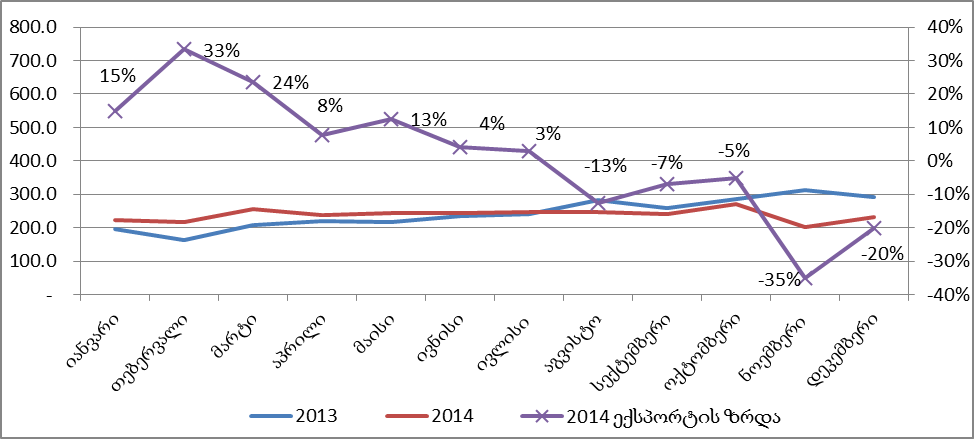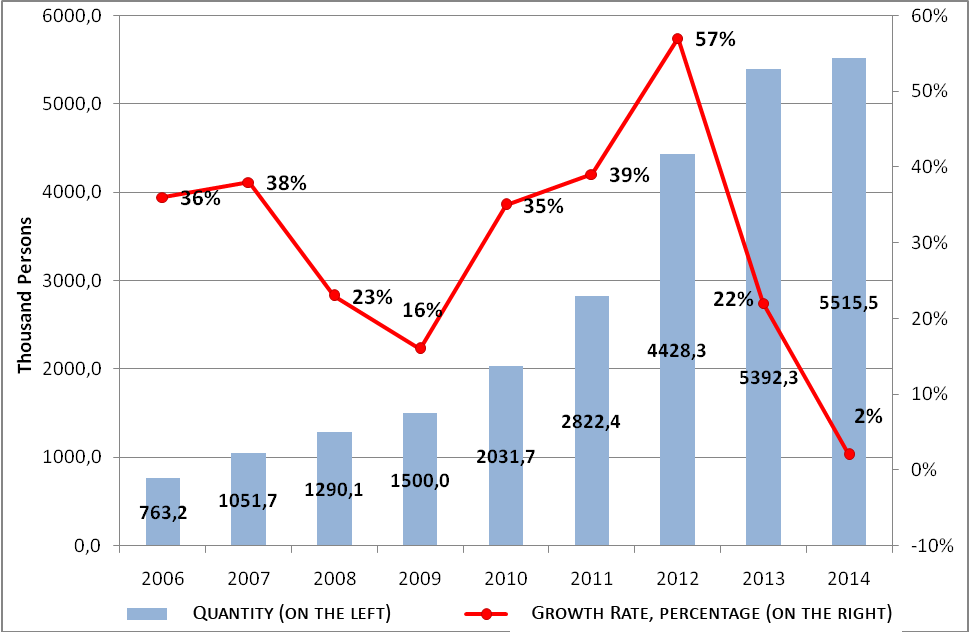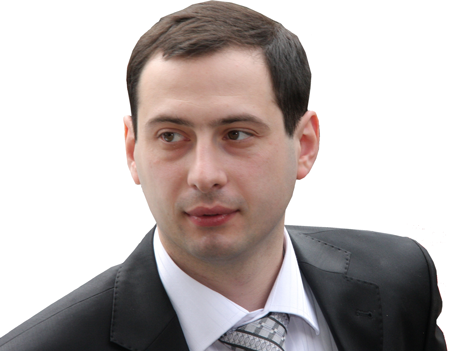On 1 April 2015, Society 2030 expert, Mikheil Dundua, declared: "The years of 2013 and 2014 were quite fruitful. The total amount of net tourism revenues for the last two years was USD 2,914 million which is USD 20 million more than the combined tourism revenues of 2008-2012. Moreover, in the years 2013-2014, we received 32% more revenues from international tourism than in the previous nine years combined."
FactChecktook interest in the accuracy of the statement.
Net tourism revenues equalled USD 1,488 million in 2014 which is 4.4% more as compared to the net tourism revenues of the same period in 2013. FactCheckobtained information about the trends in the growth rate of tourism revenues as follows:
Graph 1:
Tourism Revenues (2003-2014)

As illustrated by the graph, beginning from 2003 to present day net revenues from international tourism have seen an annual upward swing. Of these years, the lowest growth rate was registered in 2014 (4%). Tourism revenues increased by 74% on average in the years 2003-2014 whilst the average growth rate was 13.5% in 2013-2014.
Net revenues from international tourism were USD 3,366 million in 2003-2014. In 2013-2014 that number equalled USD 2,914 million. Mikheil Dundua talked about the nine years of the previous government’s rule and indicated the period of 2003-2011 but did not say a word about 2012. Instead, Mr Dundua uses the data for 2003. The previous government came into power at the end of 2003 and, therefore, if we speak of the nine years of the United National Movement’s governance, we have to take into account the revenues generated in the period of 2004-2012 which amount to USD 3,350 million. This number exceeds the tourism revenues of the last two years by USD 436 million.
In the second case, Mikheil Dundua compared 2012-2013 tourism revenues to those of 2008-2012. The net tourism revenues in 2008-2012 were USD 2,893 million which is GEL 457 million less as compared to the tourism revenues of 2012-2013. At the same time, the net tourism revenues in 2012 were USD 1,154 million. If we apply the same logic to 2012, the tourism revenues generated in only one year exceeded the combined tourism revenues of 2003-2009 by GEL 144 million.
However, it is incorrect to use the aforementioned methodology to calculate revenues. In order to define whether or not tourism revenues are on the rise, we have to observe the annual growth rate. A crude summary of the numbers will not show us a real picture. The high numbers registered today are the result of an annual high growth rate during the past few years. This is further illustrated by the fact that the revenues from international tourism equalled USD 16 million in 2003 whilst the number soared to USD 1,488 million in 2014. It is obvious that the sum of the revenues of the last years will yield a higher number. Tourism revenues were USD 1,154 million in 2012 which means that the net tourism revenues increased 88 times as compared to those in 2003 under the United National Movement’s office.
As concerns the number of visitors who entered the country, this figure has been rising annually since 2006. It must also be noted that the lowest growth rate in terms of both revenue and visitors was registered in 2014. The number of visitors actually dropped in the first quarters of 2015. It decreased by 2% as compared to the same period of 2014.
Graph 2:
Number of Visitors to Georgia (2006-2014)

Conclusion
The net revenues from international tourism were USD 2,194 million in the years 2013-2014. The combined international tourism revenues were USD 3,350 million for the nine years of the rule of the previous government. The combined international tourism revenues are 15% (USD 436 million) more as compared to the revenues accumulated in the years 2013-2014.
Mikheil Dundua provides correct numbers to compare the net tourism revenues of 2008-2012 to those of 2013-2014. However, instead of the year 2012, he uses the year 2003 when talking about the nine-year office (2004-2012) of the previous government. In this case, the 2013-2014 net revenues from international tourism "do exceed the combined revenues of the previous government’s nine-year time in office." Additionally, it is impossible to use this methodology (to simply put the years together) to get a real and unbiased picture of the sector. An annual growth rate illustrates the progress achieved by a country year-by-year. Mr Dundua manipulates the numbers in his attempt to portray the reality being upbeat and to show the existing negative trends in a positive way.
The growth of both the number of visitors and the net tourism revenues decreased (in %) throughout the year 2014. In 2015, the number of visitors has actually dropped.
FactCheck concludes that Mikheil Dundua’s statement is a LIE.







